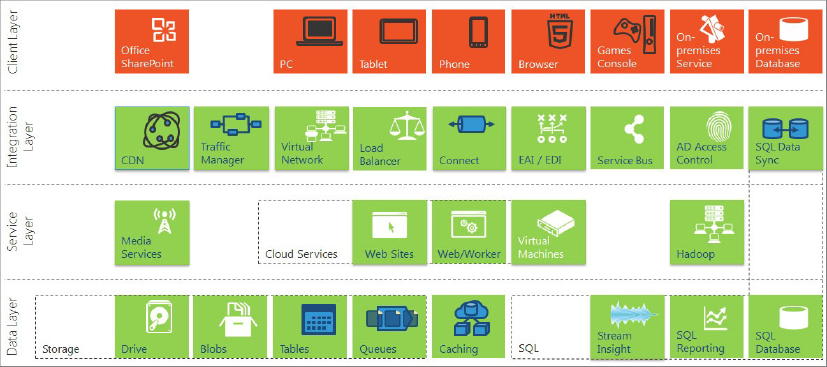WINDOWS AZURE PLATFORM
The Windows Azure platform is composed of many different services. You can leverage them in your application design, deployment, and management. Figure 5-4 shows the different layers within Windows Azure: Data, Service, and Integration (the Client layer is any application that consumes the services within Windows Azure).
Data Layer
Within the Data layer are a number of different types of data storage mechanisms (or features that map directly to data storage) — both nonrelational and relational. The nonrelational storage features enable you to store assets such as virtual machine images (Drive) or images or videos (Blobs), create nonrelational tables, manage message queues along a service bus, and manage data caching in your distributed applications. The relational data features include the core Windows Azure SQL Database (think of this as the cloud version for the on-premises SQL Server), along with reporting services (SQL Reporting) and the ability to stream near real-time data streams from data transactions (Stream Insight). Throughout this chapter and indeed your broader development efforts you can use these core Windows Azure services in many different ways when building SharePoint applications — from learning solutions that leverage Media Services to synchronizing data in the cloud using the SQL Data Sync Service. A diverse set of services ...
Get Beginning SharePoint 2013 Development now with the O’Reilly learning platform.
O’Reilly members experience books, live events, courses curated by job role, and more from O’Reilly and nearly 200 top publishers.


